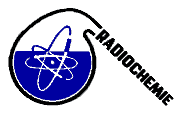Speakers
Dr
Jiří Janda
(NBC Defence Institute Vyškov, University of Defence CZ)Dr
Petr Sládek
(NBC Defence Institute Vyškov, University of Defence CZ)
Description
Airborne and terrain gamma-ray spectrometry are very effective methods for radiation control in environment, prospecting of radioactive contamination and localization of radioactive sources. These methods were proved in the system of the military radiation reconnaissance and radiation monitoring of the Czech Armed Forces. The IRIS-XP airborne gamma-ray spectrometer (4x4 liters NaI(Tl) crystals) and terrain gamma-ray spectrometer PGIS-128 (2 liters NaI(Tl) crystal), both produced by PICO Envirotec, Inc. Canada, were used for in-situ experiments. The helicopter Mi-17 was used for airborne measurement and the mobile devices and footpath variant were utilized for measurement on terrain surface. The semi-calibration of described systems was performed by comparison with semiconductor HPGe in-situ gamma-ray spectrometry on selected terrain locality. The spectra of natural radionuclides, such as K-40, Th-232 and U-238, were measured for these purposes. The radiation sources Cs-137 and Co-60 with activity from 100 MBq up to 3 GBq were used for measurement optimization and simulation of radiation events. The terrain gamma-ray spectrometry was also tested under the condition of real contamination in Chernobyl “exclusion zone”.
Primary author
Dr
Petr Sládek
(NBC Defence Institute Vyškov, University of Defence CZ)
Co-authors
Dr
Jiří Janda
(NBC Defence Institute Vyškov, University of Defence CZ)
Dr
Marcel Ohera
(EnviMO Brno CZ)

